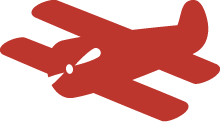10 Tips for Design Students and Young Designers
As a design student preparing to enter the real world, I think the number one thing professors and professionals told me was, “Network!” While I understand that “it’s all about who you know,” that advice was too abstract to really know what to do with it. So, from me to you, here are ten concrete ways you can set yourself up for success in the real world. I’ve broken down these pointers into three categories: Learn, Network and Promote Yourself.
Learn
1. Get inspired.
Immerse yourself in quality design and become a consumer of content created for designers.
There’s a lot of bad design in the world. When that’s all you see, it’s easy to follow suit. But when you intentionally surround yourself with great design, the content you create will reflect that. As you consume great design content, the quality of your design will improve more than you can imagine.
dribbble
Leverage the social platforms you use to get real value from them. Get on Dribbble and look around. Dribbble is a great platform for designers to post process work as well as finished projects. Since a lot of conceptual work gets posted to Dribbble, you’ll see amazing visual design that may not ever be published to the real world. Dribbble is your chance to see behind the scenes. Whether I’m working on a logo, a website or application, I will usually login to Dribbble for project inspiration or to gather content for mood boards. If you want to post your work to Dribbble, ask around and see if any designers you follow have invitations to give.
Behance
Unlike Dribbble where a post consists of one simple screenshot, Behance allows designers to post a project in its entirety. One project may include logos, brand elements, business cards, websites, “swag” (t-shirts, mugs, tote bags), etc. Behance is a platform for designers to show off what they can do. That means designers can conceptualize and show off beautiful work even if it won’t ever become a physical reality. Additionally, when posting client projects, designers will often build out additional brand collateral beyond the client’s expectations to display what they’re capable of creating. Like Dribbble, this means you’ll see lots of conceptual work that may visually be higher quality than work that makes it into real world production.
Find, follow and interact with great designers on Instagram. Lots of top design agencies post amazing content on Instagram. One thing that sets Instagram apart from other design platforms is that it allows you to see work that was created for the real world. While designers on Dribbble and Behance post beautiful work, a lot of it is conceptual. This is great when you’re looking for inspiration, but it’s hard to grasp what the average consumer is actual consuming. Instagram is a place where you can see a lot of both. Following designers or agencies such as Pentagram, Seigel + Gale or Wolff Olins is a great way to experience great work that has become a fixture in the world outside of the design community.
Podcasts and Awards
Other ways to learn and stay inspired is to listen to podcasts (Design Matters with Debbie Millman and 99% Invisible with Roman Mars are both great ones I listen to). But there are lots of great podcasts dealing with all topics of design from UX/UI and web to freelancing. Keep up with design awards and look at winning work. Most of the time, professional design honors are awarded to real world projects that have the quality of design that you would see in a conceptual project on Behance. Projects that win design awards are cool shit. AIGA is a great resource as they have both regional and national award shows.
2. Get an internship
Start trying to get an internship your sophomore or junior year. I got an internship as a senior and it’s something I now wish I’d done sooner. I can’t begin to tell you how much of a difference it made. Though college teaches you the concepts, you’re never going to fully “get it” until you have the chance to apply it. The critique you’ll receive from art directors, coworkers and clients in invaluable. This kind of real world experience will teach you exponentially more than college ever could.
3. Ask for feedback
Get in touch with more experienced professionals and ask them for honest feedback on your design work and portfolio. More often than not, professionals are happy to meet with young designers. I’ve reached out to art directors and agency owners across Kansas City – and even nationally. Most of them have been more than willing to meet me over coffee or at least take time for a phone chat. I’ve gained valuable insight about my design work and how to market my skills through my portfolio. If you’re looking for a job, this is especially valuable as creative directors and art directors can tell you the types of things they look for when hiring.
4. Copycat good design
Don’t copy someone else’s design and then call it your own. But when you do it as an exercise for yourself, creating designs that resemble or mimic someone else’s can give you a feel for the process and help you realize some of the layout techniques and design concepts that might not necessarily be intuitive. Also, copying work can help you learn to navigate your softwares (Adobe Suite, Sketch, InVision, etc.) more thoroughly. You may not know how to accomplish something that someone else did, but when you force yourself to recreate their work, it’s a great way to teach yourself new software techniques. I’ll repeat this again though: don’t copy someone’s work and call it yours.
Network
5. Bug senior designers and offer to buy them coffee
This tip somewhat overlaps with “Ask for feedback,” but it goes much further than that. When you reach out to a senior designer, it tells them you are willing to take initiative to further your skills as a designer. Even if you aren’t looking for a job, it puts you on their radar. When you meet one-on-one with someone, they will remember that interaction. If you attend events and see them, they will introduce you to their design friends and you can introduce them to yours. I’ve gotten drinks and/or phone calls with a creative director of a UX team at Google, the owner of a UX agency, an art director at a medical technology company and design educators to name a few. Most of the time, I simply reach out via email or LinkedIn with something like, “Hello [person’s name], I know of you through [so-and-so or such-and-such] and I respect the work you do at [company name]. As a young designer, I’m interested in learning more about [design thing]. If you have some free time in the next couple weeks, I would love to buy you coffee or chat over the phone…” They almost always reply. The worst they can say is no. But they usually say yes.
If you are actively pursuing a design-related goal such as looking for a job, improving your portfolio, learning a new skill, etc., I also recommend reaching out to someone and asking them to meet you on a regular basis as a sort of mentor. This year, I had as my goal to design a mobile application and use that project to learn Sketch App and InVision. I reached out to a design friend with a few more years of experience than myself and he was gracious enough to meet me every few weeks. He offered valuable feedback on the project I was working on as well as ways I could improve my portfolio.
All that to say, don’t be afraid to ask. Learn from other’s experience. And check off your “get out there and network” box in the process.
6. Be (professionally) involved on LinkedIn or other social platforms
Create a LinkedIn profile. Keep it updated. Use LinkedIn to connect with people in your design community – and designers who aren’t yet in your design community. It’s a great way to expand your circle and it’s a great way to get acquainted with those experienced designers that you should be bugging. I would say that a well-kept LinkedIn profile is especially important if you are pursuing the more technical side of design such as UX, UI, web design or development, etc. Technical recruiters look for candidates through LinkedIn, so having a strong presence on there can help you a lot. I also use LinkedIn as another way to follow great design agencies and places where I’m interested in working. Lots of companies post links to projects they’re working on or have completed, so it’s a neat way to keep up with their current projects and design trends.
If you use other social platforms such as Instagram or Facebook, either create a separate account for your professional content and make your personal account private, or ensure any content you post is appropriate for potential recruiters or employers to view.
7. Attend design events/be involved in your local design community
For me, this has meant being involved with AIGA (there are local chapters all across America, so there’s likely a chapter near you). AIGA hosts events about once a month for the design community. Sometimes they’ll bring in nationally-recognized designers for presentations or they will have designer happy hours for networking. Creative Mornings and UXPA are other organizations that put on events for creatives. It’s important to attend design events. Staying engaged will help you stay current with your work, learn about ways to expand your design thinking, encourage you to think outside the box in terms of inclusion, diversity and accessibility, and provide easy ways to network and meet colleagues.
Promote Yourself
8. Keep up with your portfolio
Three things about your portfolio:
- Keep it up to date. You keep creating great work. So you should keep updating your portfolio to show people the work you’re creating. Don’t let your portfolio sit dormant for months or years.
- Don’t show every project. It’s hard to remove projects because they feel like a part of you. However, if you’re a senior and have projects from sophomore year, it’s probably inferior to the work you’re creating now. Additionally, if you’re looking for a job in web design, the project where you created a logo and packaging for a candy company might not be super relevant. Your portfolio should contain relevant projects and your very best work.
- Show – or at least explain – process in your portfolio. Any designer can make something pretty. Not every designer is willing to do the backend work to make something that solves a problem. Talk about why you made the decisions you did. Why did you use that color palette? Why did you choose those fonts? What inspired that layout style? If you’re able to talk someone through your projects, they’ll realize that you’re able to do the more tedious process behind the beautiful design.
9. Enter awards shows
Entering awards shows is a great way to not only show off your work, but also to put those recognitions on your resumé or in your portfolio. When your work is recognized, you are recognized. So create good work and enter it. Even if you don’t win, there’s a good chance your work will be seen. And rushing to meet entry deadlines is a way to practice preparing for real world deadlines. Entering for awards is something I wish I had done more when I was in college and it’s something that I make sure to do as a young professional.
10. Give out business cards. Everywhere.
You were probably required to create personal business cards in college. Use them. And if you don’t like them, print updated cards. I carry business cards in my wallet, my purse, my backpack and my car. It’s the easiest way to put your name in front of someone in a manner that they will continue to see. They’ll stick it in their jacket pocket and when they put the jacket back on in two weeks, they’ll pull it out and be reminded. This is effective if you’re a freelancer looking for work (in the past year, two of my biggest clients were strangers to whom I gave my business card) or if you’re a young professional looking for employment. Both Moo and GotPrint print amazing business cards. Moo’s are more expensive, but their products are quality and the company is very supportive of the design community and offers discounts to AIGA members. GotPrint has great bulk discounts. Final tip: make sure your business card includes a link to your online portfolio.



